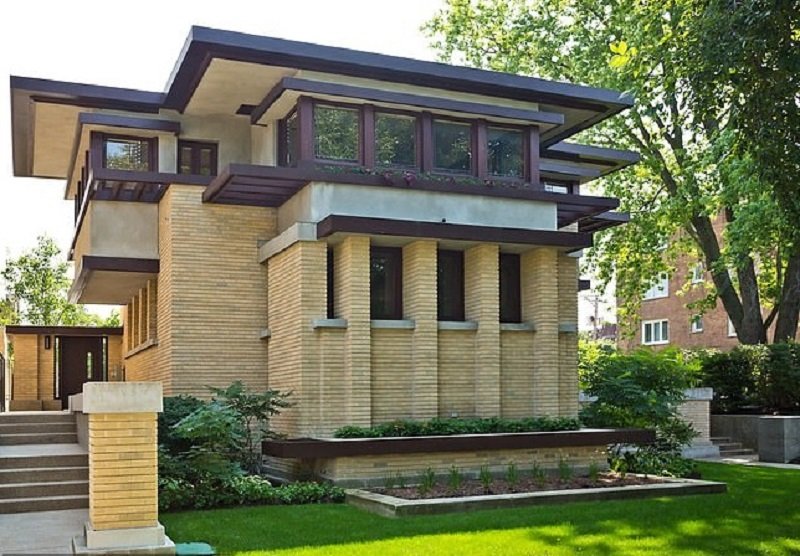#11996. Elegant Prairie Style Façade: Horizontal Lines and Natural Materials
This is a magnificent example of Prairie School architecture developed by Frank Lloyd Wright in the early 20th century. The façade displays all the characteristic features of this style: horizontal composition emphasized by wide roof overhangs and horizontal window arrangements; use of natural materials, in this case - light yellow brick and dark wood.
Particularly noteworthy is the clear geometric articulation of the façade: the lower section is constructed of brick masonry with pronounced horizontal joints, reinforcing the low-slung, earth-anchored character of the building. The upper level is marked by a series of windows with wooden framing that form an almost continuous band of glazing — another characteristic Wright technique.
The projecting eaves of the flat roof create deep shadows and emphasize the horizontality of the structure, while also providing protection from direct sunlight. The terraced approach to the house with stairs and landscaping organically connects the architecture with its natural surroundings, which is also an important principle of the Prairie style.
For modern homebuilding, several techniques can be borrowed from this building: using contrasting materials to highlight structural elements of the façade; emphasizing horizontal lines to visually expand the building; creating projecting roof elements for protection from precipitation and sun; organizing a smooth transition between architecture and landscape through terracing and thoughtful landscaping.
